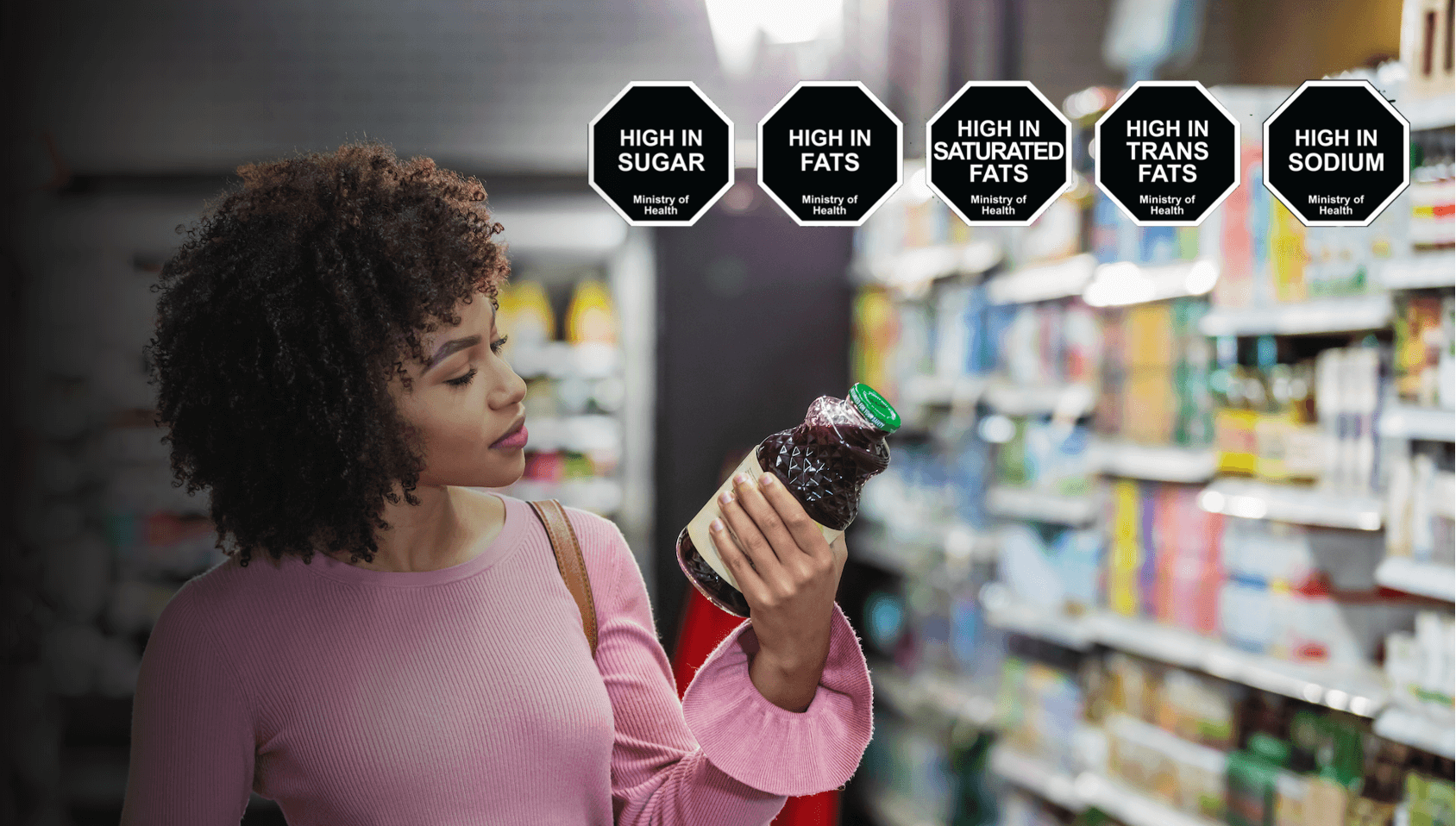

After 10 approved front-of-pack (FOP) labelling schemes in Latin America, the region is still looking to implement this strategy to address malnutrition concerns.
Chile was the first country that implemented this measure, being joined after by Ecuador, Bolivia (approved but not regulated nor implemented yet), Uruguay, Peru, Mexico, Brazil, Venezuela, Colombia and most recently Argentina.
Now, while many of these labels are already in place, in some markets, such as Peru, there are already proposals to make them more restrictive in terms of the nutritional profiles used to establish which products should or should not carry the octagon with the phrase "HIGH IN".
Colombia, meanwhile, has an approved Law and a Regulation waiting to come into force, the government has already shared a draft to modify the scheme approved and agreed with the industry (a black and white circle with the phrase "HIGH IN" for added sugars, salt/sodium, and saturated fats), for a black octagon like the one implemented in other countries but with the phrase "EXCESS". It is also being proposed to adopt more restrictive nutritional profiles based on those published by PAHO/OMS. Since the final text is not issued yet, the black and white circle is still waiting to be effective in December 2022, thus the government should accelerate the publication of these changes.
Beyond these discussions, there are also those countries interested in joining the list of countries with FOP labelling:??
- Costa Rica: A Bill was proposed in 2020. In February 2022, this was passed by the assigned commissions and is still pending for discussion at plenary. although it doest not proposed an specific FOP labelling scheme, if approved the Ministry of Health should launch the regulation that must include the phrase "HIGH IN" for calories, sodium, fats and sugar.
- Dominican Republic: A Bill was proposed in 2021and after failing in the previous legislature, in September 2022 it was filed again. This proposes the black and white octagon with the phrase "HIGH IN", and nutrient profiles based on PAHO's recommendations.
- Guatemala: A bill proposing the black and white octagon filed in 2018 has been discussed in July 2022 by the Consumer Protection Commission at the Guatemala?s Congress. Local NGOs and PAHO?s office in Guatemala are lobbying for progress in the discussion.
- Panama: A bill is currently at the Assembly. Instead an octagon this proposes a black and white hexagon with the phrase "HIGH IN". After being discussed in February 2022, it has not made much progress. The Institute of Nutrition of Central America and Panama (INCAP) has repeatedly expressed its support for this initiative. Likewise, NGOs and nutrition professionals have called for the law to be passed quickly.
- Paraguay: During August 2022 the Senate discussed and approved a bill (filed in 2019) that seeks to implement an FOP labelling in products containing certain levels of energy (calories), sugars, saturated fats, trans fats and sodium. Although the bill does not specify the model of the scheme, later 2021 the National Institute of Nutrition and Foods (INAN) is discussing on the best one to be implemented in that country. Now the bill should be discussed and approved by deputies.
- MERCOSUR (Southern Common Market): There is a proposal on the table to harmonise the FOP labelling in MERCOSUR, however 5 of the 6 Member States have their own national regulation approved, being Paraguay the only one remaining for implementing this measure. So far, there is only consensus to work on nutrient profiles and a scheme to comunicate on excessive nutrient contents. Given the differences between the rules approved and implemented in Argentina, Brazil, Bolivia (only approved) Uruguay and Venezuela (suspended since 2015 for political reasons), it seems that this discussion will take a long time to achieve a result.
- SIECA (Central American Integration System): In the first instance, it was decided to update the RTCA on Nutrition Labelling, and with this, in 2017, a proposal for an RTCA on FOP labelling was submitted and updated in 2021. However, the final text has not yet been approved.
- CARICOM (Caribbean Community): A proposal to introduce the ?HIGH IN? octagon model was shared for comments in 2018 and in February 2021. The point of divergence is that some stakeholders do not accept the ?HIGH IN? octagon model as the best fit and single model for the country, while others contend that it may be the most effective. Even some Member States have proposed not to limit the FOP labelling to the ?High-In? octagon model and include those models also adopted in the main markets with which the region does business.
In summary, the trend is to align the FOP labelling with the model proposed by PAHO (a black and white octagon) although with variations regarding to the phrase (HIGH IN / EXCESS), and the nutritional profiles used as a cut-off line to determine which products should display this octagon. Likewise, it remains to be seen how regional discussions impact on already approved regulations such as the one in Brazil, characterised by a magnifying glass, the traffic light implemented in Ecuador and the one approved but yet to be implemented in Bolivia.
If you are interested in exploring Latin American countries, reach out us to know how the FOP labelling rules in these markets impact on your portfolio.
19 September, 2022
?????
© All rights reserved. All news and diagrams placed on this Web site is made for internal use. Its reproduction or distribution in any form are welcome in case of placing a direct hyperlink to a source. Reproduction or distribution of information which contains FJS International Solutions as a source is prohibited without the written permission from FJS International Solutions. Photos placed on this site are taken from open sources only.